10 Stories of Kindness That Show Angels Walk Among Us Every Second of Every Day

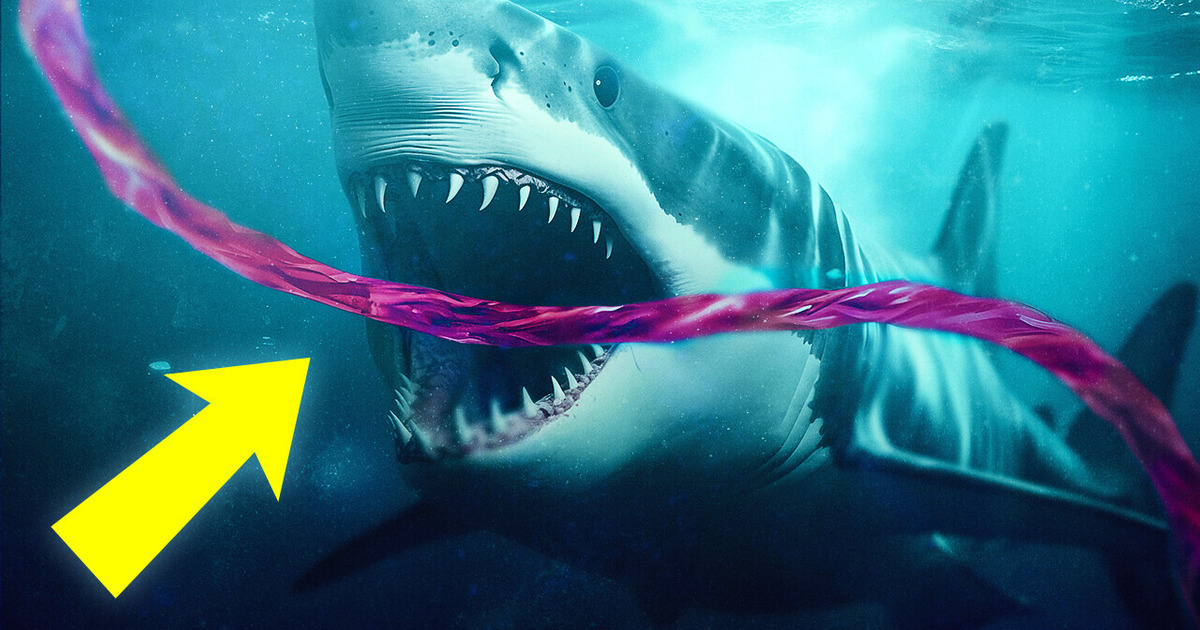
Scientists and geologists are out there in the vast ocean, towing these trusty devices, also known as streamer cables. They drop these cables about 16 to 65 feet deep, with each stretching over 20,000 feet long. Now, you can imagine that this whole setup creates quite a commotion underwater, attracting all sorts of curious creatures. And guess who shows up for the party? Sharks! Yep, these toothy pals are drawn to the magnetic fields of the streamer cables and sometimes mistake them for a chewy snack.
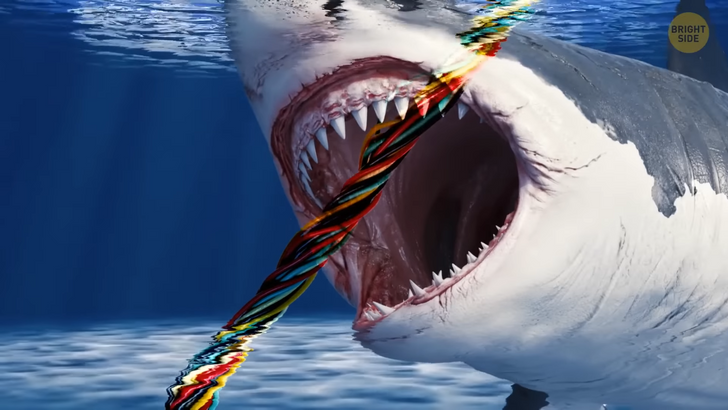
Now, before you start thinking that sharks have a personal vendetta against these cables, let me tell you something. This is not a new problem; it’s been going on since the 1980s! Even big players like Google have faced these underwater cable conundrums. They had to surround these internet cables with a fancy material to protect them from shark teeth. I mean, can you imagine a shark causing a delay in your internet browsing? That’s one hungry predator with a serious grudge against technology!
So, why exactly are sharks so keen on these cables? Well, no one knows for sure. Some scientists think it’s because sharks have a thing for electromagnetic fields and get curious. Others believe they just have a thing for anything cable-shaped.
It’s not all sharks that cause such problems. But which of them are the troublemakers in this aquatic tale? Well, it depends on the depth of the cables. For example, when it comes to a particular depth, the bull sharks seem to be the mischief-makers. These bad boys have solid, gray physiques and short snouts. They’re like the bullies of the underwater neighborhood, causing trouble wherever they go. Bull sharks are widely found in tropical and warm waters around the world, and they seem to have a knack for seeking out these streamer cables.
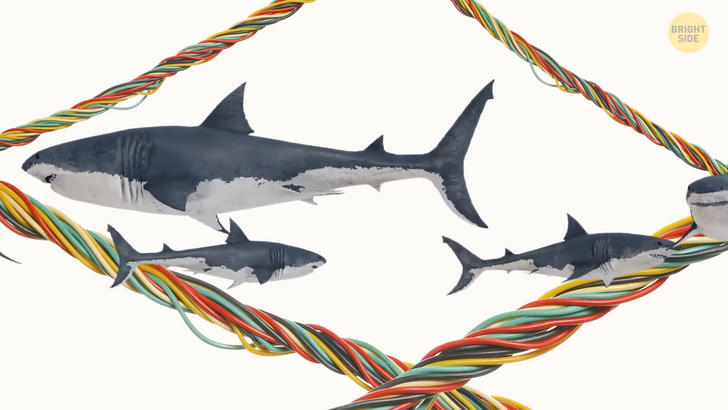
Now, I know what you’re thinking: Did these scientists really catch a group of bull sharks and make them bite cables just for science? Nope, they’re way too clever for that. Instead, they used a 3-D scan of an authentic bull shark jaw to create a computer model. Talk about high-tech! They simulated shark attacks on the cables, measuring the impact and compression forces. It turns out that a shark can really do a number on those cables, but here’s the kicker: the strength of the cables depends on how fast the shark is swimming when it decides to take a chomp. So, if you see a shark cruising by at top speed, you better watch out for those cables!
But wait, we can’t blame the poor sharks entirely for the fate of these underwater cables. A 2009 report points out that a lot of fish have a considerable history of nibbling on cables. It’s like a buffet for these underwater creatures! Barracudas, sharks from shallow and deep waters, and even some other sneaky culprits have been identified as cable biters. They just can’t resist sinking their teeth into the cable wrapping, which then lets the power conductor hang out with the seawater. It’s a recipe for cable failure.
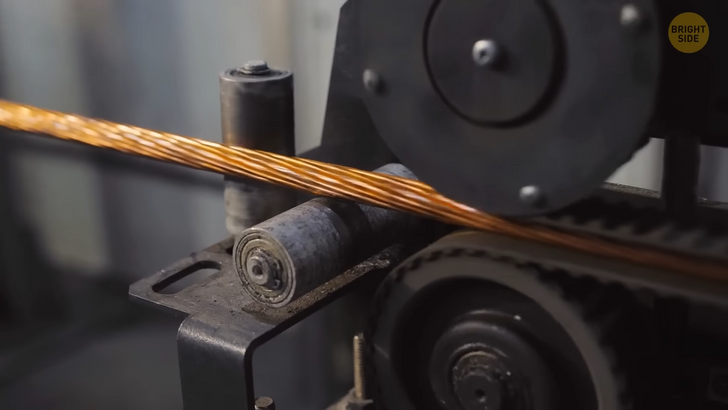
Still curious about the fascinating world of cable installation? Did you know that more than over 90 percent of international data takes a watery journey? These cables, which are like underwater highways, stretch for hundreds of thousands of miles beneath the ocean surface, reaching depths as deep as the size of Mount Everest.
Now, you might be wondering how these cables are placed. Well, it’s not as simple as dropping wires in the water, like in the cartoons. In fact, it requires some careful planning and specialized boats called cable-layers. These brave boats meticulously run the cables across the flat surfaces of the ocean floor, making sure to steer clear of all obstacles that Mother Nature throws their way.
When it comes to cable sizes, the shallow water cables are about as thick as a soda can. On the other hand, deep water cables are way smaller, measuring up to the size of a marker. Why the difference, you ask? Well, it’s all about vulnerability. Way down there, 8000 feet below sea level, there isn’t much action going on. Therefore, these deep-sea cables don’t need as much shielding wire for protection. They’re like the skinny swimmers of the cable world, gliding through the depths with ease.
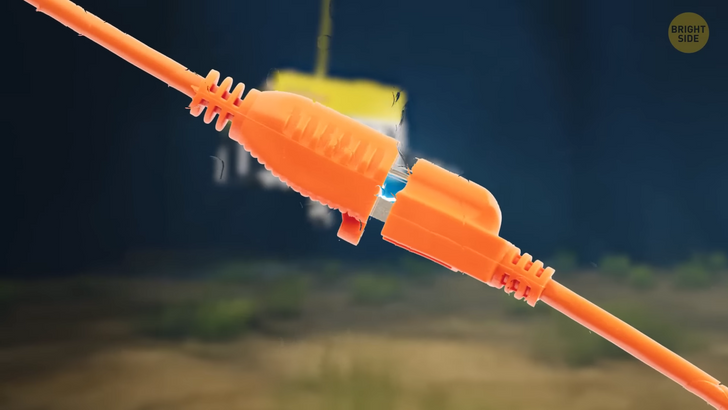
But let’s not forget about the installation costs! Brace yourself, because placing a cable across the vast expanse of the ocean is no bargain. We’re talking about millions of dollars! Now, the actual price may vary depending on factors like the total length of the cable and its destination. But trust me, it’s definitely not pocket change. Installing shallow water cables is quite the spectacle. They are carefully stuffed beneath the ocean floor using high-pressure water jets. It’s like giving these cables a cozy underground home, shielding them from the whims of the ocean currents.
So, while cable installation may be slow and, let’s face it, a bit expensive, it’s truly a remarkable feat of engineering. The underwater world is a complex and delicate ecosystem, and the cable-layers take great care to ensure that their installations don’t disrupt the marine life and habitats that call the ocean home. It’s a balancing act between technological progress and oceanic conservation, and they’re doing a pretty good job at it. Whenever you browse the internet, remember that your cat videos and funny memes might just be zipping through those submarine cables deep beneath the waves.
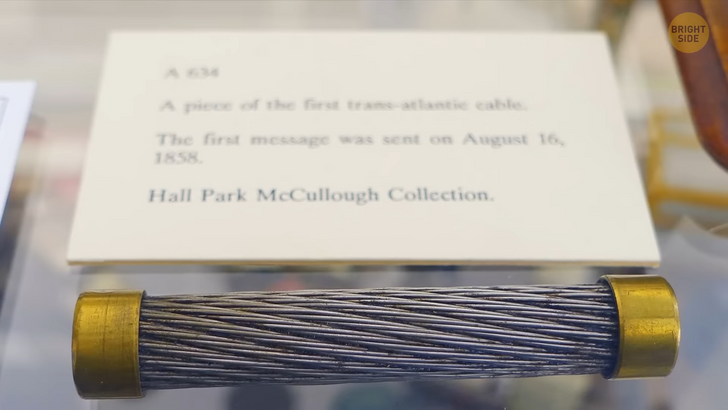
But burying cables safely underwater isn’t actually a modern idea, you know. Hold on tight because we’re going on a time-traveling adventure back to the mid-19th century! Picture this: it’s 1854, and something groundbreaking is about to happen. The installation of the very first transatlantic telegraph cable begins, linking the distant shores of Ireland and Newfoundland. Now, before you roll your eyes and say, “Old news, buddy,” let’s remember that this was a pretty big deal back then.
Fast forward four years, and the moment of truth arrives. The first transmission is sent through the cable, carrying a message that goes something like this: “Laws, Whitehouse received five minutes signal. Coil signals too weak to relay. Try drive slow and regular. I have put intermediate pulley. Reply by coils.” Okay, okay, maybe not the most exhilarating message ever sent. But hey, they were just getting started! Now, let’s put ourselves in the shoes of those remarkable folks involved in this undersea endeavor. Imagine being the lead electrician of the Atlantic Telegraph Company, also known as “Whitehouse” in the message. He must have been quite the electrician extraordinaire!
To put things into perspective, while our cable pioneers were busy laying the groundwork for transatlantic communication, the world outside was bustling with activity. Charles Dickens, that literary genius, was still crafting his timeless novels. Meanwhile, a little settlement named Dallas was officially incorporated in the vast state of Texas. It’s pretty incredible to think about how far we’ve come since then, with our high-speed internet and seamless global communication.
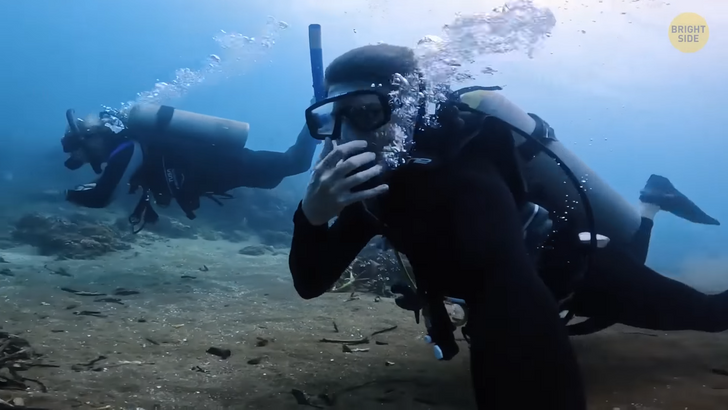
Could you really take down the internet by simply going underwater with a pair of wire cutters? Well, technically, yes. You’ll need to be all geared up, wearing your snazzy scuba suit, and holding a pair of trusty wire cutters. You can also add a mischievous grin on your face, just to create the right ambiance, don’t you agree?
Now, let’s get serious. Cutting through those super important submarine communications cables is no easy task. They carry thousands of seriously dangerous volts! But, here’s the deal: someone actually did it in Egypt back in 2013. A group of daring individuals wearing their sleek wetsuits and equipped with wire cutters decided to give it a go. Their target? The South-East-Asia-Middle-East-West-Europe 4 cable, a whopping 12,500-mile lifeline that connects three continents.
As soon as those mischievous cable cutters did their thing, chaos ensued. Internet speeds in Egypt took a nosedive, plummeting by a staggering 60 percent! Can you imagine the frustration of trying to load a cute puppy video and having to wait for ages? But hey, let’s keep things light-hearted here. The internet, like a phoenix, rose from the ashes once the cable was repaired. Speeds were restored, and everyone could once again binge-watch their favorite shows and indulge in endless rounds of online gaming.











